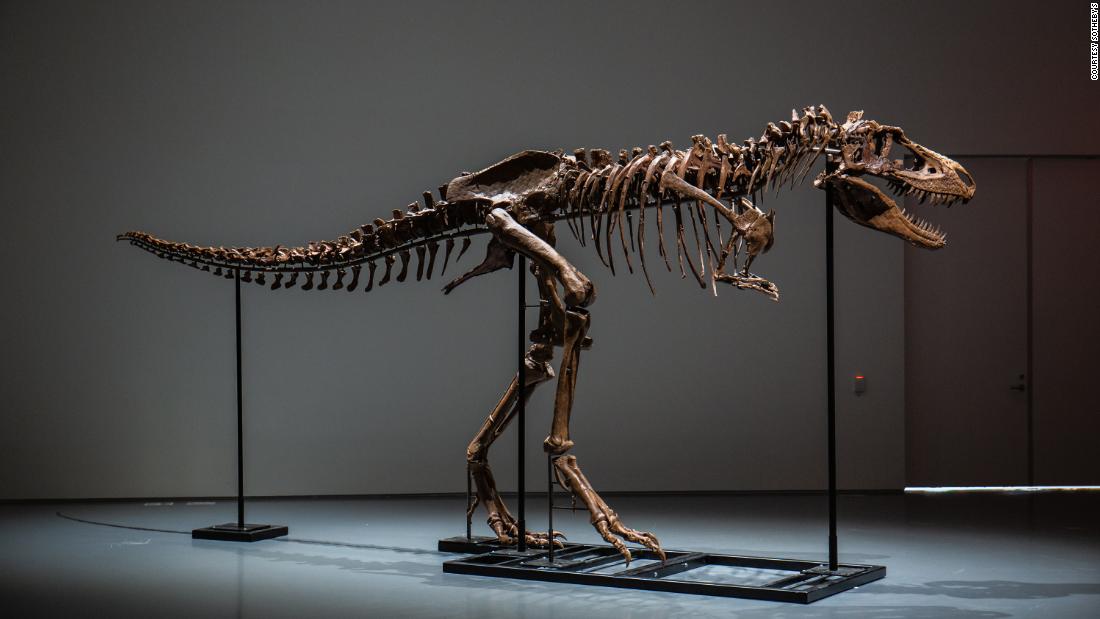

This story was updated to reflect the final sale price.
The fossil was discovered in 2018 on private land in the Judith River Formation, in Montana’s Choteau County, and has 79 bone elements, according to Sotheby’s. All other known Gorgosaurus skeletons are in museum collections, making this one the only specimen of its kind offered for private ownership — which some scientists consider problematic for scientific study.
“In my career, I have had the privilege of handling and selling many exceptional and unique objects, but few have the capacity to inspire wonder and capture imaginations quite like this unbelievable Gorgosaurus skeleton,” Cassandra Hatton, Sotheby’s global head of science and popular culture, said in a news release.
“Excavated only a few years ago, a Gorgosaurus has never before been offered at auction, and the opportunity of sharing this dinosaur with the public for the first time is an immense pleasure and a highlight of my career.”
Fossil auctions and ethics
“The professional paleontology community anxiously anticipated the T. rex auction because of uncertainty as to whether the important specimen would end up in a private collection, thereby making it unavailable for scientific study and public display, or in a public repository in this country,” he wrote. “The ultimate concern was the effect the sale would have on the science of paleontology.”
“In my own opinion, there are only cons,” said P. David Polly, a professor and chair of the department of Earth and atmospheric sciences at Indiana University Bloomington. “While certainly there is no law in the US that supports this for fossils that come off private land, it’s easy for me as a scientist to argue that that fossil is important to all of us, and really ought to be going into a public repository where it can be studied — where the public at large can learn from it and enjoy it.”
Fossils on private lands belong to private individuals who can do what they want with them, whereas fossils on public lands are regulated by the federal government and essentially belong to the government or “the people, if you will,” Polly said. “When there is a fossil that goes up for auction like this and is predicted to make millions of dollars, one of the things that does is it says to private landholders that the fossils on their land really ought to be monetized.”
Other scientific experts, however, acknowledged that museum collecting has historically included acquisitions from commercial sources.
“It makes me sad that there’s a price tag on dinosaurs,” but “it’s not a black or white issue,” said Gregory Erickson, a professor of anatomy and vertebrate paleobiology at Florida State University in Tallahassee. “There is a history of museums buying commercial specimens.”
“It’s a brave new world for our science,” said vertebrate paleontologist Steve Brusatte, professor and Personal Chair of Paleontology and Evolution at the University of Edinburgh, via email. “In a world where dinosaur skeletons fetch millions, where does that leave scientists and museums, who can’t afford such inflated prices?”
And what did Polly think would be the best-case outcome of this auction? “That whoever is selling it would listen to what I just said and have a conversion experience and donate it to a museum,” he said. “The second best would be that somebody wealthy heard this kind of message and gave a lot of money (to a museum) so that can be purchased for a museum.”